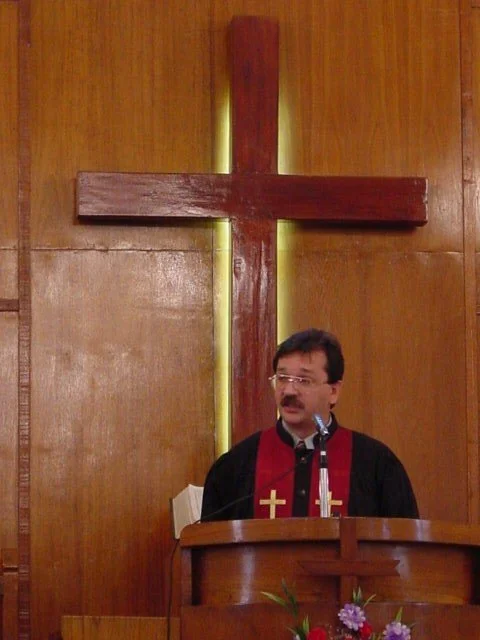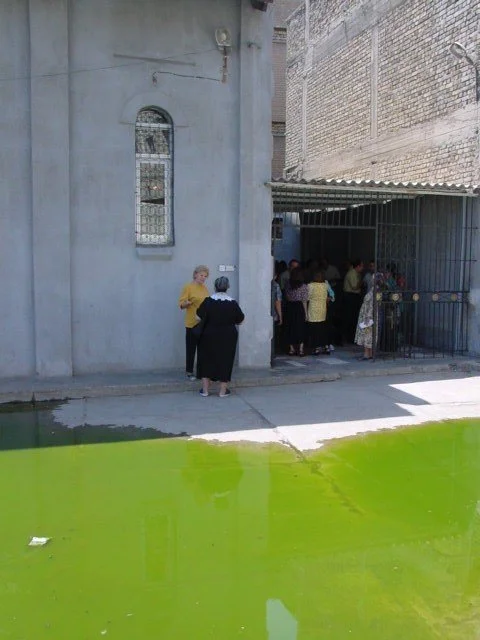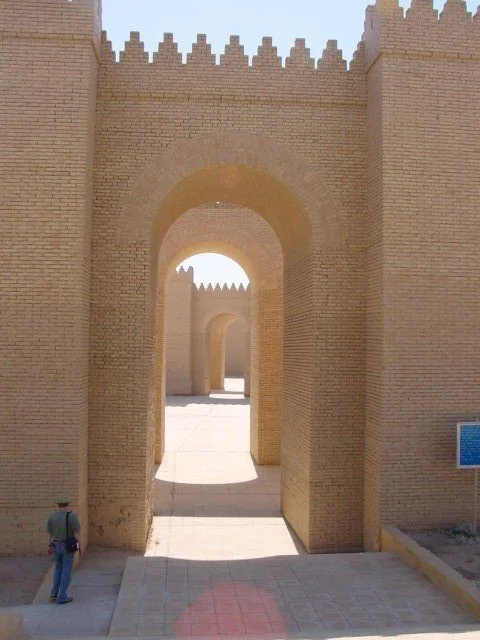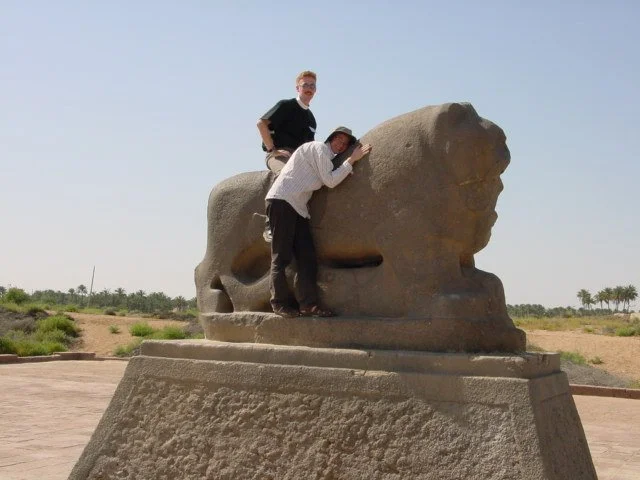May 18, 2001
Pastor Nashwan of the Assyrian Presbyterian Church of Baghdad.
Outside the Assyrian Presbyterian Church.
The Presbyterian delegation broke away from the conference to meet with the two Presbyterian churches of Baghdad. In the morning, we worshiped at the smaller Assyrian Presbyterian Church, whose front courtyard is beset by sewage pipes over-flooding. The church itself was beautiful and understated. The congregation was formed from Assyrian Christians, and so many of the traditional elements of worship - the Lord's Prayer, hymn singing, etc. - are done in Aramaic rather than Arabic. Friday is their usual day for worship. In the Middle East, this is the weekend, and so churches often adjust likewise. We were blessed with translators scattered through the congregation for Pastor Nashwan's sermon on Luke 5.
The Presbyterian Church of Baghdad.
After some brief time for fellowship, we hurried off to the air-conditioned (Baghdad summers warrant it) Evangelical Church of Baghdad (the word "Evangelical" in the Middle East usually means "Protestant"), 1000 members strong. Our schedule didn't give us the opportunity to worship with them, but we did meet with their Session and their Egyptian pastor, Pastor Ikram. The word in Arabic for "Presbyterian" is Mousheikhiyya, which comes from the root-word sheikh. A sheikh is also the leader in the mosque, but it means "elder," and is so used by Arabic-speaking Presbyterians.
We heard later that the rest of the Conference had headed to Ur, where they were greeted by 2000 "grass-roots" pro-Saddam/anti-sanction (and anti-US) protesters. As the attendees made their way up the Ziggurat (tall prayer tower, like a pyramid), the protesters gathered at their tents for refreshments.
Part of the reconstructed city of ancient Babylon.
Original mosaic in Babylon.
Ancient lion sculpture at Babylon.
Marduk image at Babylon.
We, instead, headed down to the site of ancient Babylon. While very little original exists of Nebuchadnezzar's magnificent city (great treasure from here is in British and German museums), the old city has been reconstructed quite well to give a sense of the grandeur that once enveloped this place. Among the original treasures that still are here are an ancient lion statue that once guarded Nebuchadnezzar's gates, bricks with the mythical Marduk in relief, and one of the original mosaics that once lined the walls here (visit Germany for the rest).
On the mountain overlooking reconstructed Babylon is another presidential palace. During the 1991 Gulf War, the symbolism was apparently too much for some millenialist Americans, who saw Biblical prophecy being fulfilled as "Babylon was being rebuilt." We chose, instead, to read passages from the Bible that talk about exile. Seems more appropriate given the disconnect between visions of God's reign and the realities of this region.
